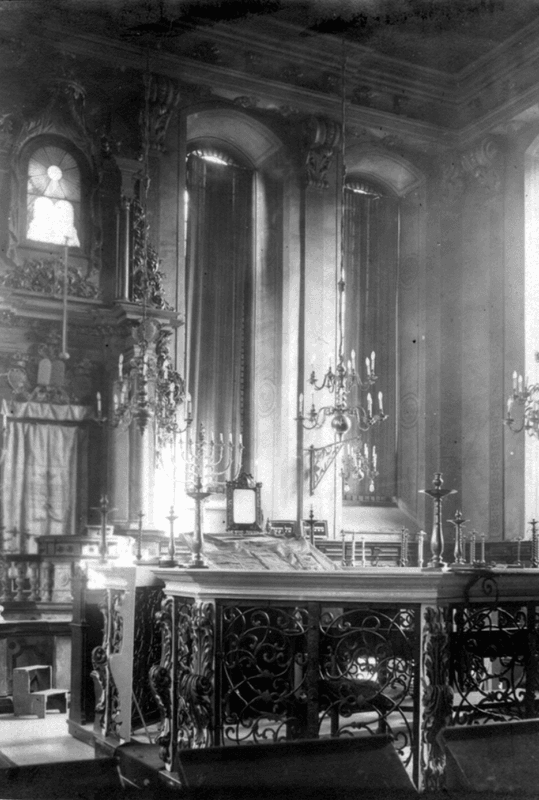
Baroque Synagogue | DenkOrt
Barocksynagoge
The community synagogue stood between the Mikwenhaus in Judenstraße and the row of houses on Bakenstraße. On the other side of the street is still the Klaussynagoge. Today, the mikveh house and the Klaus are home to the Berend Lehmann Museum of Jewish History and Culture. The Mikwenhaus served as a ritual bath for the Jewish community. Through the passage you reach the DenkOrt. At this place stood over 250 years the community synagogue. Schwab writes: Through the simple door, the vestibule flanked by columns and through the vestibule I enter the interior of the synagogue, one of the most characteristic in Germany. The imposing height of the building is further enhanced by a mighty dome in the middle of the ceiling; the admiring gaze continues to wander to the gilded ornaments created in sublime work, which represent an imitation of former temple utensils in Jerusalem. The holy ark is surrounded by mighty marble columns, and gilded tendrils wrap around the canopy crowning it. Two galleries, which rise in the western part on columns above each other, form the women's synagogue.Consecrating silence surrounds me: the mighty side walls repel the noise of the street and nothing disturbs the deep peace, whose wings spread over the silent place of prayer.In the pogrom night of November 9, 1938, the Baroque synagogue was attacked. Chairs and benches were overturned, Torah scrolls landed on the street and the interior furnishings were stolen. 10 days later, the city of Halberstadt decrees that the synagogue must be demolished. Rails are laid and trucks remove materials such as the wooden roof, stones and interior furnishings. At the end of March 1939, the synagogue is gone. The cost of about 2,000 marks is imposed on the Jewish community.In the passage is a text by the writer Joseph Roth. The pious Jew he describes is Hermann Schwab.





